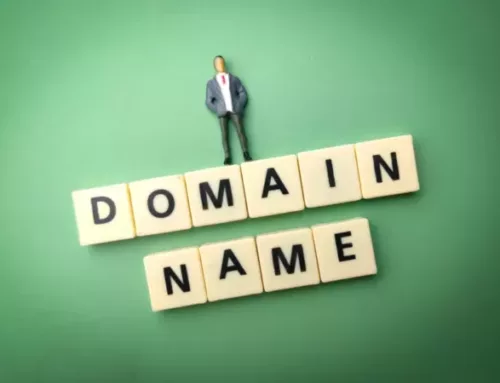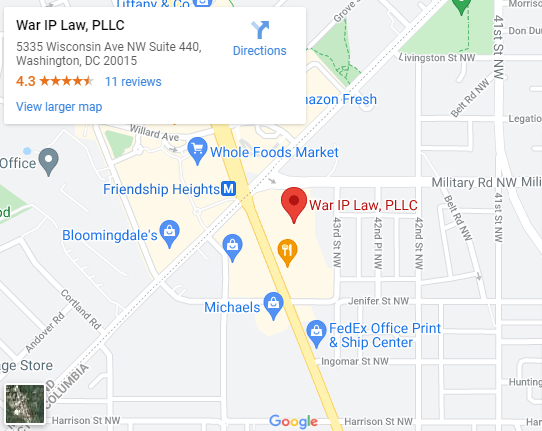Everything from written works to computer software can fall into the broad category of intellectual property (IP). When someone creates a work, these pieces are protected under the law. While there are plenty of pros of IP, there are also a few cons. Read on to learn more about the advantages and disadvantages of intellectual property. If you would like to learn more about how IP can affect you, contact the Washington, D.C. attorneys at War IP Law PLLC by calling 202-800-3754.

What Are Some Advantages of Intellectual Property?
When people create some form of intellectual property, they are granted plenty of advantages under the law. Some of the most common pros of IP include:
Encouragement of Creativity and Innovation
Intellectual property provides a framework that encourages individuals and businesses to devote time, energy, and resources to the development of new ideas, inventions, and creative works. Creators and inventors can venture into unexplored areas with confidence, knowing their work will be safeguarded and rewarded. Intellectual property protection encourages scientific progress, technical breakthroughs, and creative masterpieces by facilitating a competitive environment.
Economic Incentives
Intellectual property protection provides exclusive rights that promote economic growth and prosperity. Creators can monetize their innovations, works, or trademarks by licensing, selling, or commercializing their intellectual property. As a result, these projects may increase revenue, job generation, and investment prospects. To attract investors and get financing for creative ideas, startups and small enterprises rely largely on intellectual property rights. Also, intellectual property assets can be used as collateral for loans, accelerating corporate growth and development.
Protection of Investments
Creating intellectual property normally requires substantial research, development, and marketing expenditures. Intellectual property rights protect these investments by making using, reproducing, or distributing IP assets illegal. This protection gives creators and innovators a competitive advantage by allowing them to recoup their investments and benefit from their work. It stimulates risk-taking by ensuring innovators can profit from their ideas, fostering an atmosphere conducive to ongoing innovation.
Encouragement of Collaboration and Knowledge-Sharing
Effective intellectual property protection creates an environment ready for collaboration and knowledge. This legal structure promotes:
- Partnerships.
- Licensing agreements.
- Technology transfers.
Additionally, it opens up avenues for inventors and creators to share their knowledge and experience with others, which can lead to the creation of new technologies and innovations. Licensing agreements provide businesses with access to patented technology, resulting in the development of improved products or services. This collaborative setting boosts societal progress and helps transfer valuable knowledge across industries and geographies.
Disadvantages of Intellectual Property
Intellectual property has both advantages and disadvantages. Some of the drawbacks include:
Restriction of Access to Knowledge and Information
While intellectual property protection promotes innovation, it can also create knowledge and information access barriers. Patents, copyrights, and trademarks can restrict the free flow of ideas, potentially impeding the creation of new discoveries and works. By imposing legislative restrictions on the use and transmission of knowledge, scientific research may be delayed, access to vital medicines may be limited, and creativity may be stifled. Policymakers must maintain a careful balance between upholding intellectual property rights and ensuring widespread knowledge distribution.
Inflated Costs and Monopolies
Intellectual property protection has the potential to create monopolies, especially in businesses with considerable research and development costs. For instance, patents grant inventors exclusive rights to their inventions for a specified period of time. This exclusivity may increase prices, limiting access to important products, specifically in the pharmaceutical industry.
Patent thickets, where multiple patents overlap for the same product, can prevent new entrants from joining the market and ultimately hinder progress. For that reason, equitable access to essential goods and services should be guaranteed through intellectual property regulations.
Legal Complexity and Litigation
Even the most seasoned innovators and producers may find intellectual property law challenging. The legal landscape is complex, leading to costly battles favoring larger, better-funded entities. Intellectual property rights can be misused or abused through subjective enforcement and interpretation, resulting in disparities and confusion. As a result, intellectual property laws can make dispute resolution mechanisms more accessible to promote a fair and efficient intellectual property system.
Stifling of Free Expression and Creativity
Overly severe intellectual property enforcement can stifle the expression of free ideas and creativity. This is because copyright laws can restrict the use of copyrighted content for educational, artistic, or transformative reasons, stifling the growth of derivative works or transformative art.
It is vital to balance creators’ rights and the need to foster a vibrant creative culture. Fair use exceptions, which allow for limited use of copyrighted content for certain purposes, such as criticism, commentary, and education, are critical in maintaining this balance, as they protect intellectual property rights while simultaneously supporting free expression. Reach out to War IP Law PLLC to see how these intellectual property pros and cons can affect you.
How Long Do These Rights Last?
The International Trade Administration states that certain types of intellectual property, such as copyrights and patents, have limited terms. The expiration of IP rights depends on the type of protected creations. Thes categories determine when legal protections may end for certain works.
Trademarks
Registered trademarks typically last indefinitely in the United States if continuously used, maintained, and defended against infringement. Owners pay fees to the United States Patent and Trademark Office between the fifth and sixth years after registration, between the ninth and tenth year after registration, and then between the ninth and tenth year thereafter.
Copyrights
For works created after January 1, 1978, copyright lasts for the author’s lifetime plus an additional 70 years after his or her death.
Design and Utility Patents
Design patents protecting these creations last 15 years from the grant date. Utility patents can last as long as 20 years so long as the maintenance fees are timely paid.
Trade Secrets
These legal rights remain indefinitely as long as the information remains confidential and the secrets keep their commercial value.
Reach Out to a D.C. Intellectual Property Lawyer Today
There are both advantages and disadvantages to intellectual property and its rights. Today, IP continues to be a driving force for continuous innovation, helping protect creators’ works and boost economic growth. Despite some challenges, intellectual properties play a vital role in helping society progress into the future. If you would like to learn how to protect your intellectual property, consider scheduling a consultation with War IP Law PLLC by calling 202-800-3754.






